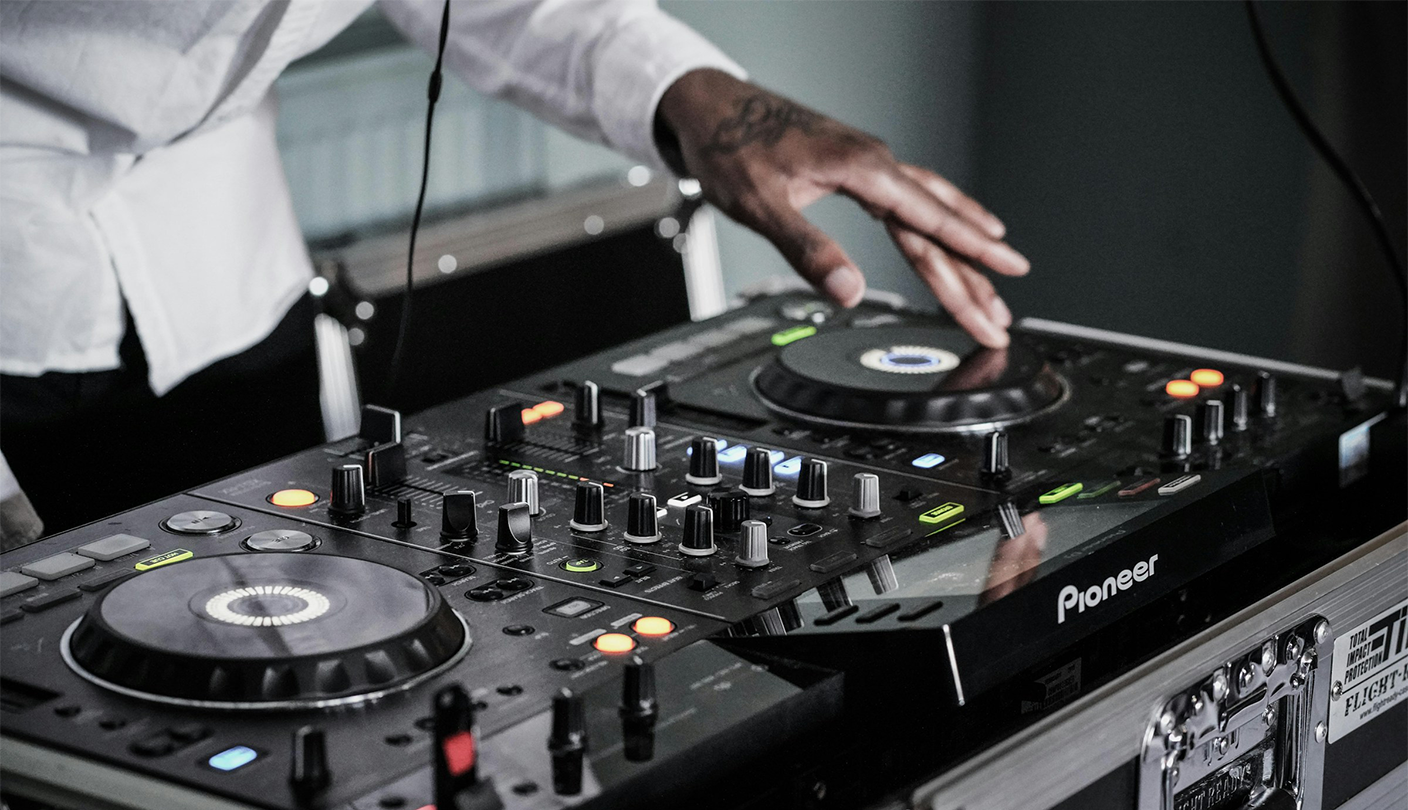
Remixes can bring out all sorts of dimensions in the original track that were always there, just hidden within the song’s original instrumentation and production. Remixing can also give you more options for incorporating a song you love into a playlist, DJ set, or many other ways you might share music.
One of the best advantages of remixes is that you can create them yourself. When you learn how to remix a song, you open new doors for both yourself and the original song. You can use the below guide to get started.
What is a remix?
A remix is a song that includes enough parts of the original track to sound like it, but enough differences to be a separate recording.
An official remix of a song typically starts with the original artist providing the remixer with the song’s stems. These are the audio tracks that make up the original song, such as bass, guitar, drums, synths, and vocals. The remixer then edits and arranges this source material to come up with something new yet familiar.
What do you need to remix a song?
You’ll need a song’s stems before you start remixing it. You can often obtain these stems through sample packs, DJ pools, and remix contests. Plus, certain sample pack sources, such as Splice Acapellas4U, and Loopmasters, include only copyright-free stems. Any remixes you create using solely these sounds are fully legal to release.
You’ll also need a digital audio workstation (DAW) to remix a song. You can create a remix in just about any DAW, whether programs that come with your computer, such as GarageBand, or downloadable programs like Ableton.
How to choose the right song to remix?
Choosing a track to remix may come down to figuring out which of your favorite songs are the simplest. In most cases, simpler songs are easier to create an exciting remix from than one full of complex songwriting, performance, or production. Of course, once you begin to feel super proficient in remixing songs, complex songs can be on the table too.

Distribute your music with DistroKid
Get your music into Spotify, Apple, TikTok, YouTube, and more with unlimited uploads, plus keep 100% of your earnings.SIGN UP FOR DISTROKID
Another way to think about this is that the best songs to remix are those you think would sound even better with a remix. You may also find it appealing to remix songs you think could benefit from more elements. Minimal or acoustic songs, for example, may leave lots of room for additional electronic flourishes.
How to remix a song: 8 steps
Below are some steps you can take to turn a song’s original stems into a remix that’s all your own.
1. Think about how you want your remix to sound
Let’s say you’re creating a remix to use in DJ sets. Knowing this goal can help you figure out which songs you might want to remix. For example, if you’re going for a fast groove, you may want the original track to be high-tempo too. Alternatively, if you’re trying to remix a song into something tranquil, shooting for lower tempos may be better.
2. Get your stems and add them into your DAW
You may want to search stem databases for the songs you’re thinking of remixing before you commit. Once you’ve found stems from these songs, you can download them and then upload them into your DAW.
You may want to line all the stems up in your DAW so you can see which tracks and sounds you have at your disposal. You might not need each and every one of them, and seeing them side by side may help you figure out which ones to ditch.
3. Choose which stems you’ll use in your remix
This may seem contradictory, but the fewer stems you use for remixes, the more room you may find for adding your own flair and creativity. A question that may be helpful to ask is: What balance do I want to achieve between my signature sound and the original song’s sound?
For example, let’s say you typically create fast-paced electronic music with clear throwback disco elements. You may want to add some electronic string and horn flourishes to your remix to leave your thumbprint on it. These, though, could interfere with any live-recorded brass and string stems. You can remove these stems from your DAW and record your own parts instead.
4. Consider your original track’s key and BPM
Often, the original song should be within 10 BPM of your target tempo for your remix, as well as in a similar key. This way, as you twist your stems into new chord progressions, you keep the original track’s signature sound while showcasing your own style.
Keeping your remix in key may be especially important — some remixing experts say that out-of-key remixes may be a fast path to unenjoyable productions. Some experts also recommend using the tool TuneBat to determine your original track’s tempo and key.
5. Play around with the original song’s melody
Your remix of a song is basically your own unique interpretation of it. This means that you may want to keep the melody roughly intact but modify it to emphasize your own perspective on the track. Maybe you feel that the vocals would sound better under a sea of reverb. If so, you can make this change part of your remix. Or if you think that the guitar line would work better as a synth track, you can make this change too.
6. Consider recording some new chord progressions
It’s one thing to edit the original song’s stems so that the chord progression is somewhat different. It’s another thing entirely to record your own new chord progression and add it to your remix. Both approaches can lead to a remix that you’re really happy with and that listeners might love.
Determining the original track’s key is a great first step. From there, you can use any music theory you know to write new chord progressions that are in the right key. Once you’ve done that, you can record your new chord progression in your DAW and remove the original stem. Your version of the song will still sound like the original, but with your own special touch.
7. Add drum samples
Using new drum samples in a remix can change the original song’s groove and how energetic or relaxed it makes listeners feel. Programming drums from scratch under the original song’s stems can help you set exactly the mood you have in mind.
After you program your drums, you can remove the stem drums. The result could be a remix that resembles the original track, but with a different vibe and your own style imprinted on it.
8. Mix and master your remix
After you’ve recorded new parts and arranged all your stems how you’d like, you can truly give your remix its final shape. This is where mixing and mastering come into play. Through mixing, your remix’s individual tracks will each be lowered or raised in volume to strike an enticing balance. Mastering involves compression, equalization, stereo enhancement, and limiting to ensure the remix sounds good no matter how people listen to it.
If you’re creating a remix for a contest that a record label is running, the label may handle the mastering. Otherwise, you may need to master the song yourself — and in both cases, you may be responsible for mixing. Of course, you might not know how to mix and master, and that’s okay. You always have the option of hiring other people to mix and master your work. Although this comes with a price tag, the spend can be worth it for a remix that sounds just right.
After your mix and master are complete, take a deep breath, release any stress you’ve built up, and congratulate yourself. You’ve successfully remixed a song!
What are the legalities of remixing a song?
Just as with sampling music, you need the original artist’s permission to use their work. Namely, you would need a song’s copyright holder to grant you permission in writing before you release your remix. This is true whether you’re remixing a popular song or a track that relatively few people have heard.
You can also seek out remix competitions that your favorite artists are holding. Entering a remix content the artist has opened to the public may automatically give you permission to remix the songs they’re including in the competition.
If you do get legal permission to release your remix, you’ll likely split royalties for it with the artist and their publisher. In some cases, the original artist will pay you a one-time fee upfront instead of splitting royalties. While you won’t continue to earn money from the remix in this situation, the money you earn upfront may still make your arrangement fair. And there’s no price tag on the sheer thrill that can come with remixing a song.
What makes a successful remix?
There’s no one definition of success when it comes to remixing. However, surprises and playfulness often lead to remixing success.
For example, the music video version of Icelandic luminary Björk’s song “Alarm Call” is a remix of the album version heard on 1997’s Homogenic. Where the album version is icy and full of harsh low-end beats, the music video version transforms the stems into a fun-filled, disco-adjacent remix. While both versions clearly share the same vocals and certain synth flourishes, the remix explores dancefloor possibilities not entirely imaginable within the original’s starkness.
Likewise, the Spain-based, Venezuelan-born producer Arca’s remix of Lady Gaga’s “Rain on Me” is effective because it makes the song even more playful. Although both versions incorporate elements of electronic dance music, Arca’s remix reimagines “Rain on Me” as a ghostly rave track. It’s also notable because it contains her signature spooky yet goofy ad-libs, as well as her melancholy Spanish vocals and synth patterns. It’s an infusion of herself into a remix that still resembles the original.
Remixing can be as easy as it is fun
You may find that, with the above tips, remixing becomes a breeze and a joy. What’s more, if you get legal permission to create a remix, you get to release it rather than just keep it for yourself. We recommend using DistroKid to prepare for your release — it’s the simplest way to upload your music to Spotify, Apple, TikTok, YouTube, and many other platforms. Once you’re happy with the remix you’ve put together, why not take a few quick steps to put it out there?



